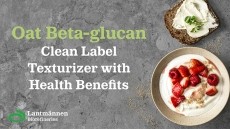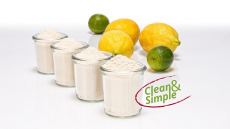Simple, low-cost microparticles could replace fat, texturise
Dublin-based researchers used the high-speed shearing technique to produce a range of microparticles that could also be used as bulking agents, according to findings published in the Journal of Food Engineering.
“A simple and low-cost procedure has been developed to produce an array of agarose microparticles that have a range of functionalities and could be of use in many areas throughout the food industry, for example as fat replacers or as micro-encapsulation vehicles for functional ingredient protection and delivery,” wrote the researchers, led by Jean-Christophe Jacquier from University College Dublin.
Fat replacers, along with emulsion stabilisers, thickeners, suspending agents, gelling agents, fibre sources, and mouthfeel improvers all come under the umbrella of hydrocolloids. This market has grown significantly in the past 20 years in parallel to an increasingly complex food processing industry.
The food industry's most frequently used hydrocolloids include: agar, alginates, arabic, carrageenan, Carboxy Methyl Cellulose (CMC), gelatin, konjac flour, locust bean gum (LBG), Methyl Cellulose and hydroxypropyl Methyl Cellulose (MC/HPMC), microcrystalline cellulose (MCC), pectin, starch and xanthan.
Agarose is found in red seaweed and is the gelling component of agar. It is already widely used in the food industry.
New procedure gives new possibilities
Jacquier and co-workers prepared the microparticle suspensions by putting the bulk gel (Gelagar CT type 1.0 from Gracilaria rhodophyta red algae, B&V, Italy) in distilled water at a gel to water ratio of 1:2. This was then blended and then subjected to high speed shearing.
The researchers report an average particle size of about 100 micrometres for the one and two per cent microgel suspensions.
“The small size of these particles means that they could be incorporated into a food product as a bulking agent and texture modifiers for a wide range of beverages,” wrote the researchers.
“The results from the mechanical testing of the bulk gel indicate that their soft texture and high elastic nature will not impact negatively on the mouth feel of the product.”
Moreover, they note that initial rheological tests showed that at a high solid content around 30 per cent, the viscosity is low. This would not impact the flowability of the final food product, they said. At solid contents above 35 per cent, a solid-like dispersion was observed, although this still maintained the characteristics of a fluid gel.
Source: Journal of Food EngineeringVolume 90, Issue 2, Pages 141-145“Manufacture and characterisation of agarose microparticles”Authors: A. Ellis, J.C. Jacquier



























